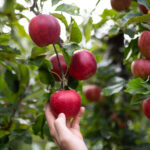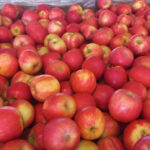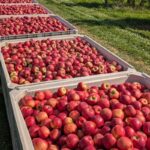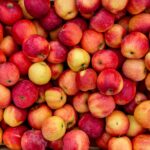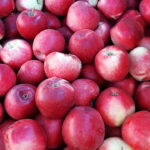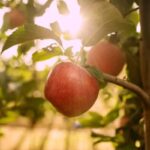Golden, not yellow: a new category for Opal apples in Europe

Golden Opal apples – a sweet, crunchy variety of Czech origin – are on track to achieving year-round availability for consumers in European nations such as the U.K., Germany and Austria. 
Michael S. Weber, webfruit's Opal representative from Germany, said pilot orchards of the apples in New Zealand and South Africa should have their first, limited samples available in Europe this May.
"At the current stage, they are evaluating arrival in the U.K. and Germany from South Africa and New Zealand from pilot orchards. It takes some time to get that going. But mid to end of May the fruit will arrive. Then we are preparing the Northern Hemisphere season again," Weber told www.freshfruitportal.com.
So far the fruit, technically known as the variety UEB 32642 but branded as Opal, has been made available up north through local orchards, including an estimated 375,000 trees planted to date in Europe.
Through Empire World Trade in the U.K. and San Luca in Austria and Germany, Weber said the goal was to build on the momentum of local fruit and create a 12-month supply.
"We are on the way to establish a vertical supply chain. In order to maintain the brand quality, we have to work closely with a few big companies to get everything in place and deliver a good product," he said.
"That is the first important level to get and then over time we will enlarge it and there will be more growers joining."
Although the first southern fruit will come from New Zealand and South Africa, Weber said notable plantations have also been established in Chile. Under the guidance of Varieties International co-owner David Weil, Weber said South American fruit would also become available in northern markets in years to come.
To date, Weber said Opal apples that have hit retailer shelves had received outstanding reception.
"We know from market research through our partners in Germany, the U.K. and Austria that once the consumer has eaten it, they are very loyal. They are coming back and asking for the same product again," he said.
The fruit's golden color, however, creates certain marketing challenges for the fruit. Consumers may mistakenly associate the apple with Golden Delicious, a category in decline across many markets, according to Weber.
"The consumer is not looking for more yellow apples because they are associating yellow with softness and no crunch. There is a trend and tendency in Europe that people are looking for highly red apples," he said.
Opal was developed from a cross between Golden Delicious and Topaz, but the apple stands apart from such varieties. The fruit remains crunchier than Golden Delicious and the fruit has been reported as sweeter, with a brix level of 15° and more from young orchards.
South Africa-based Top Fruit pome fruit manager Peter Allderman said the key to success for Opal would lie in branded marketing, with the apple needing its own, specialized category to thrive.
"In terms of market acceptance, as long as it is positioned as a new category of apple, then I believe that it has a tremendous future. It has a really special taste that every single person who has tasted it in South Africa has remarked upon. It is similar to feedback we get from the States.
"We believe that is going to drive the future of this variety that the consumer is going to come back and say, ‘I want that gold apple."
He said marketers of Opal-branded apples would do their best to disassociate the fruit with yellow apples and push the fruit as a 'gold' category instead.
"Supply creates its own demand. Before this variety, we didn’t think of it [golden]. But now that we’ve looked at it and seen the response the variety gets in the States and the response from San Lucar in Germany and Empire World Trade in the U.K., it looks like there is going to be a new category coming in," Allderman said.
"Some supermarkets will carry both Opal and yellow apples. Others will prefer to have only one and I believe they will be going for Opals because of the taste."
In South Africa, Allderman estimated around 100,000 trees would be planted in coming years. For growers, he said the variety came with a number of benefits.
"It's one of the lower chilling varieties that I've seen. It's extremely precocious. It comes into production fairly easily. It bears and sets a huge crop every year, so from that aspect it’s extremely grower friendly," he said.
"It maintains its firmness very well. I strongly suspect it’s going to have a long picking window of up to four weeks, which makes it easy for the growers."
The main goal will be convincing consumers to give the fruit a shot through educational campaigns and in-store samples.
"The trick with this apple is to get it down the gullet. Once it’s gone down, they come back. It sells itself. You don’t need to do a sales job on this one. That's the reason I'm so bullish."
Related story: Czech apple gains global footprint

















